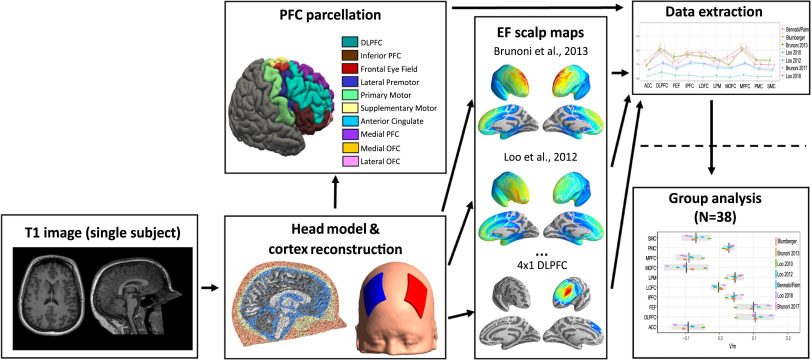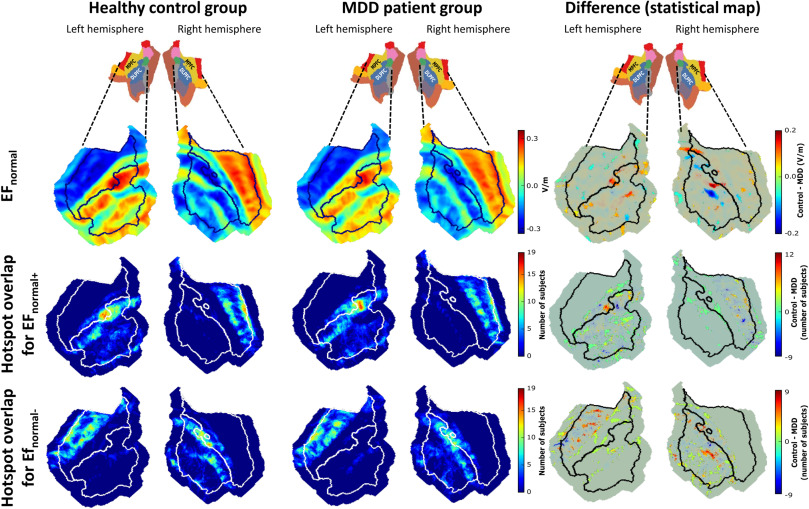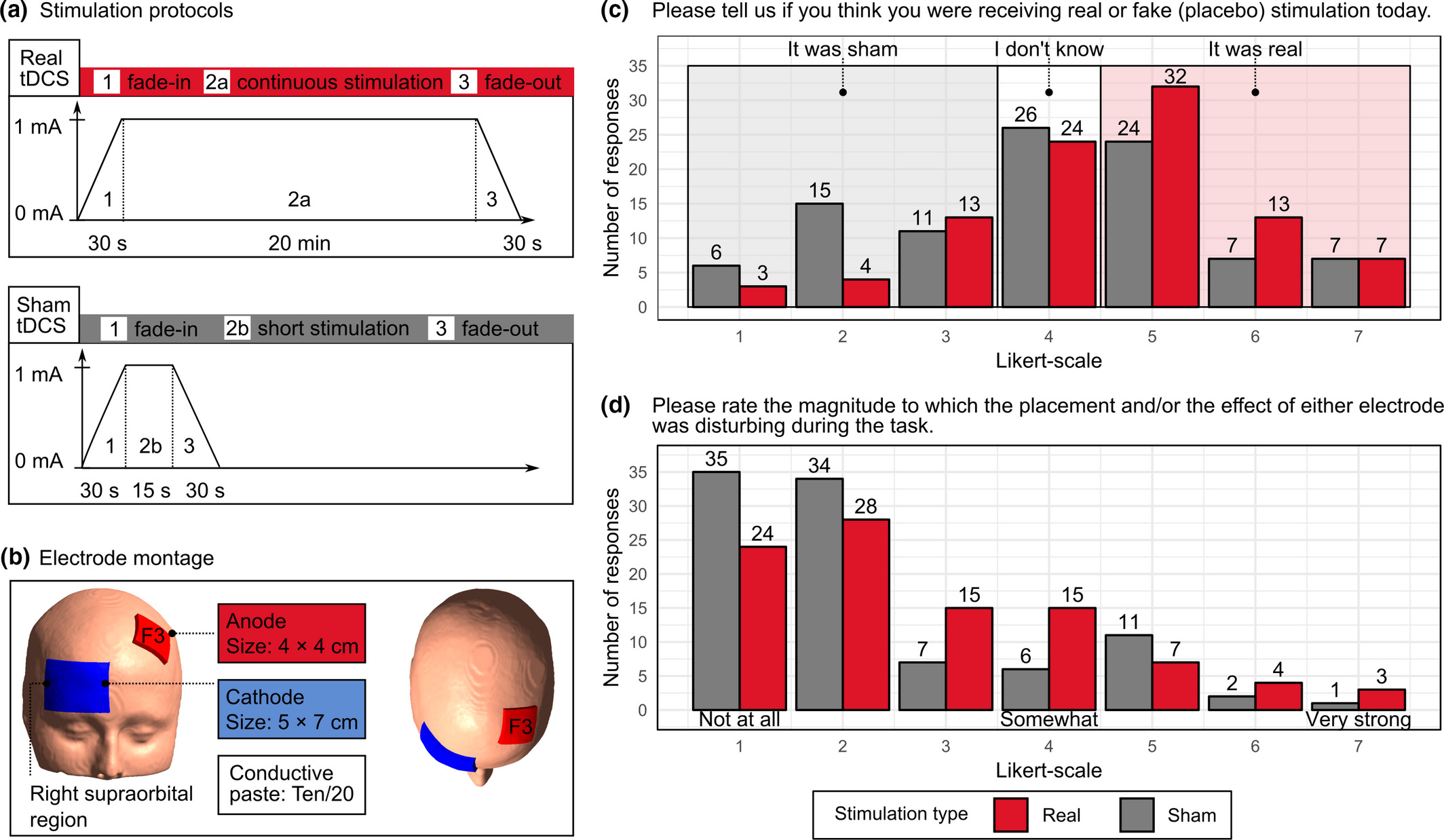Developing non-invasive brain stimulation methods for clinical and cognitive neuroscience
Advancing non-invasive brain stimulation is crucial for cognitive and clinical neuroscience, and our research group in cognitive neuroscience is actively contributing to this field. Improving focality enables precise targeting of specific brain areas, enhancing our understanding of neural circuits and cognition. Better tolerability ensures safer and more widespread application, facilitating broader experimentation and clinical use. Systematically evaluating existing methods promotes a thorough understanding of their effectiveness, allowing researchers to refine protocols responsibly. These developments hold promise for treating neurological disorders, improving cognitive functions, and unraveling brain-behavior relationships. Investing in innovative non-invasive brain stimulation methods propels neuroscience towards more accurate and impactful discoveries.
 |
Using computational modelling of the human brain based on structural brain scans, we can evaluate which areas of the brain will be stimulated by different brain-stimulation protocols. We make use of this methodology to study and compare various brain-stimulation methods in terms of how well they stimulate the brain region of interest. Csifcsák, G., Boayue, N. M., Puonti, O., Thielscher, A., & Mittner, M. (2018). Effects of transcranial direct current stimulation for treating depression: A modeling study. Journal of Affective Disorders, 234, 164–173. https://doi.org/10.1016/j.jad.2018.02.077 |
 |
We can also assess how differences in brain anatomy (that is associated with different pathologies, such as dementia or depression) change which brain areas are differentially affected by identical stimulation protocols. This is important to evaluate the clinical impact of brain stimulation applied to clinical groups. Csifcsák, G., Boayue, N. M., Puonti, O., Thielscher, A., & Mittner, M. (2018). Effects of transcranial direct current stimulation for treating depression: A modeling study. Journal of Affective Disorders, 234, 164–173. https://doi.org/10.1016/j.jad.2018.02.077 Rasmussen, I. D., Mittner, M., Boayue, N. M., Csifcsák, G., & Aslaksen, P. M. (2023). Tracking the current in the Alzheimer’s brain—Systematic differences between patients and healthy controls in the electric field induced by tDCS. Neuroimage: Reports, 3(2), 100172. https://doi.org/10.1016/j.ynirp.2023.100172 |
 |
We also study important methodological properties of brain-stimulation protocols. For example, can participants and experimenters identify which brain stimulation protocol is applied? This is important for methodologically rigorous research that avoids confounding variables caused by insufficient blinding. Turi, Z., Csifcsák, G., Boayue, N. M., Aslaksen, P., Antal, A., Paulus, W., Groot, J., Hawkins, G. E., Forstmann, B., Opitz, A., Thielscher, A., & Mittner, M. (2019). Blinding is compromised for transcranial direct current stimulation at 1 mA for 20 min in young healthy adults. European Journal of Neuroscience, 0(0). https://doi.org/10.1111/ejn.14403 |
Publications:
- Rasmussen, I. D., Mittner, M., Boayue, N. M., Csifcsák, G., & Aslaksen, P. M. (2023). Tracking the current in the Alzheimer’s brain—Systematic differences between patients and healthy controls in the electric field induced by tDCS. Neuroimage: Reports, 3(2), 100172. https://doi.org/10.1016/j.ynirp.2023.100172
- Turi, Z., Lenz, M., Paulus, W., Mittner, M., & Vlachos, A. (2021). Selecting stimulation intensity in repetitive transcranial magnetic stimulation studies: A systematic review between 1991 and 2020. European Journal of Neuroscience, n/a(n/a). https://doi.org/10.1111/ejn.15195
- Turi, Z., Csifcsák, G., Boayue, N. M., Aslaksen, P., Antal, A., Paulus, W., Groot, J., Hawkins, G. E., Forstmann, B., Opitz, A., Thielscher, A., & Mittner, M. (2019). Blinding is compromised for transcranial direct current stimulation at 1 mA for 20 min in young healthy adults. European Journal of Neuroscience, 0(0). https://doi.org/10.1111/ejn.14403
- Csifcsák, G., Boayue, N. M., Puonti, O., Thielscher, A., & Mittner, M. (2018). Effects of transcranial direct current stimulation for treating depression: A modeling study. Journal of Affective Disorders, 234, 164–173. https://doi.org/10.1016/j.jad.2018.02.077
[Loading...]